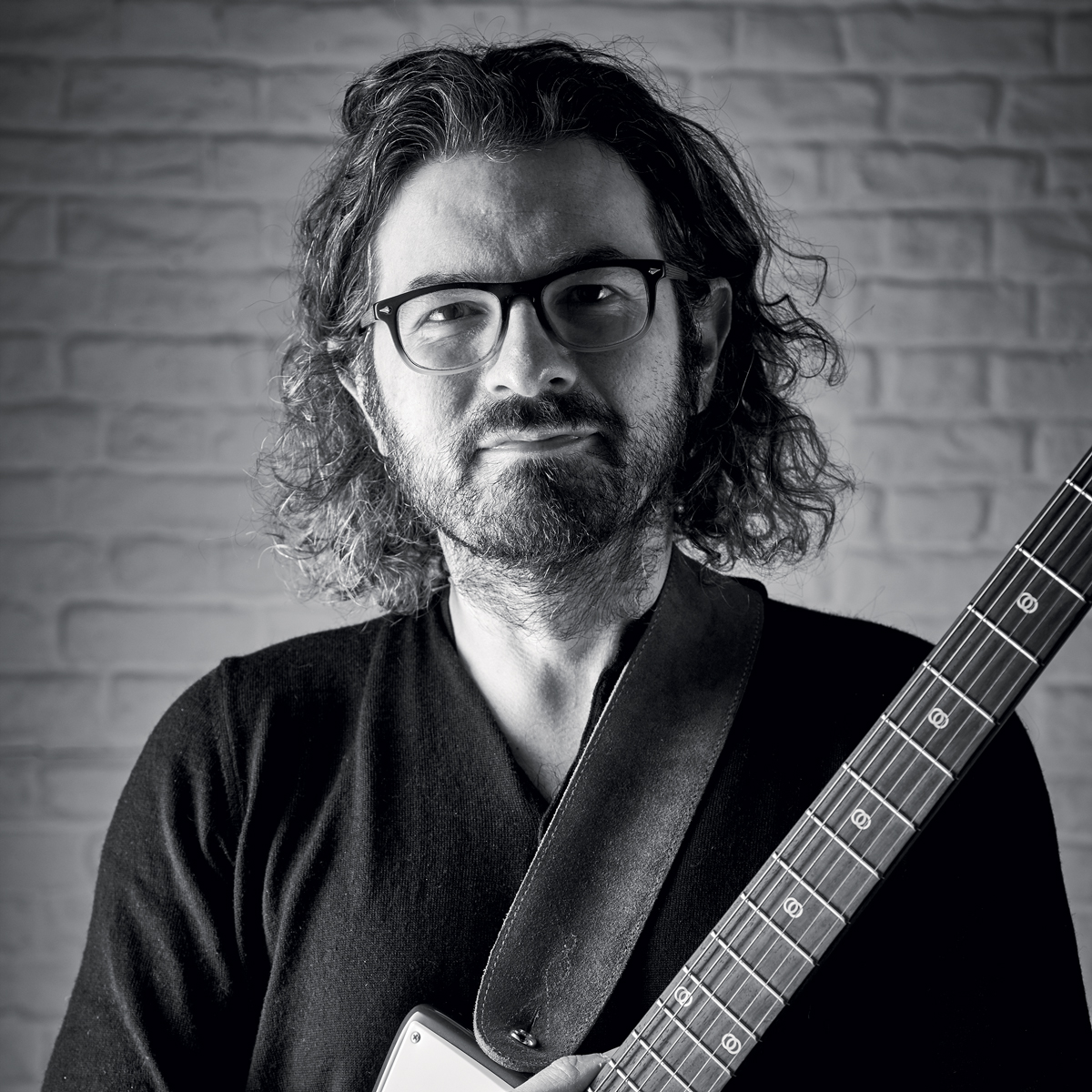“Aja by Steely Dan is the blueprint… If there was a formula for every kind of success you could have in music, that record embodied it”: Young Gun Silver Fox are keeping yacht-rock afloat with lawsuit guitars and 10-year-old strings
Top-tier ’70s-style AOR is back on deck with Young Gun Silver Fox, whose guitarist and co-founder Shawn Lee shares how rare, oddball and collectible guitars are the wind in their sails
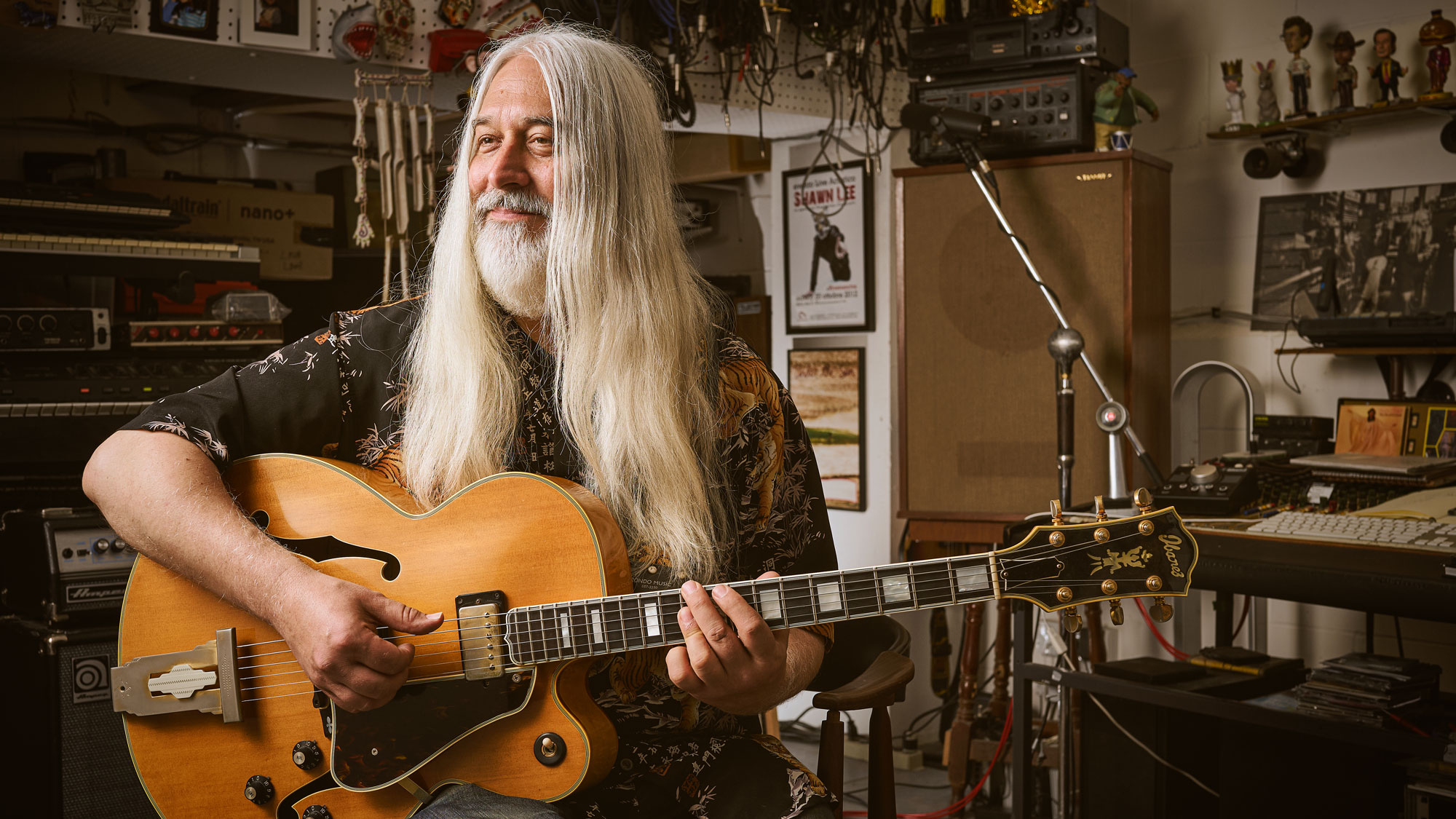
Tucked away in a studio complex in London, you’ll find an enchanted grotto of weird and wonderful guitars, musical curios and vintage synths. Duck under Brazilian percussion chimes, oddball guitars and tiger masks and you’ll find the genial owner of this cave of tone – Shawn Lee, the guitarist and co-songwriter behind Young Gun Silver Fox.
The band, who recently had a breakthrough performance at the Royal Albert Hall, have revived the yacht-rock genre that Steely Dan and Michael McDonald polished to such a high art in the ’70s, bringing their own fresh, contemporary energy to it and attracting a rapidly growing international fanbase to their beautifully crafted grooves and harmony-rich songs of heartbreak and hedonism.
Intrigued, we journeyed down to catch up with Shawn, who also collaborated with Little Barrie for their excellent Ultrasonic Grand Prix album, Instafuzz, which sounds like the soundtrack to a lost Italian heist movie from the ’70s.
Shawn’s very happy to keep things varied, he says – though it’s clear that Young Gun Silver Fox have resonated with plenty of listeners starved of classy chord changes and lush vocal harmonies.
As the excellent new album entitled Pleasure is out now, we sat down with Shawn to talk recording, influences and head-turning Japanese guitars…
You’re five albums in now with Young Gun Silver Fox, but it seems like things have reached critical mass recently, with sold-out US tours and a show at the Royal Albert Hall. What’s your perception of the band’s path to success?
“I think it’s a very slow, gradual, organic thing with Young Gun Silver Fox. I think the Royal Albert Hall was a moment. I mean, I had never played there – and I had always wanted to play there, so I felt the gravity of it. When I was on stage, it felt like, ‘Wow, this is amazing,’ and a couple times I got a bit choked up [laughs]. I always felt that I would play there at some point, but to do it with my own project is another thing again.
All the latest guitar news, interviews, lessons, reviews, deals and more, direct to your inbox!
“It started like everything that I do: because I wanted to do it. Kind of like, ‘Wouldn’t it be nice to do this?’, you know? When I met Andy [Platts, Young Gun’s frontman], I saw somebody that, if we put it together, it could be kind of like a Steely Dan situation.”
“He understood all the musical reference points and I just thought we would make some nice music together. So, eventually, we started to do it with no expectation other than making the music and the pleasure of writing and recording it.
“I didn’t ever have any expectations of it, beyond ‘I’ll make a record because I want to make it and then I’ll put it out, however I put it out, and then whatever happens with it is what happens with it,’ you know?
“And sometimes I have a feeling that one of my records might appeal to more people than a little niche thing – although if it is a little niche thing, it’s fine, I know that. But it’s been really nice to see it blossom and to see it resonate with people – the kind of thing that you can’t really engineer.”
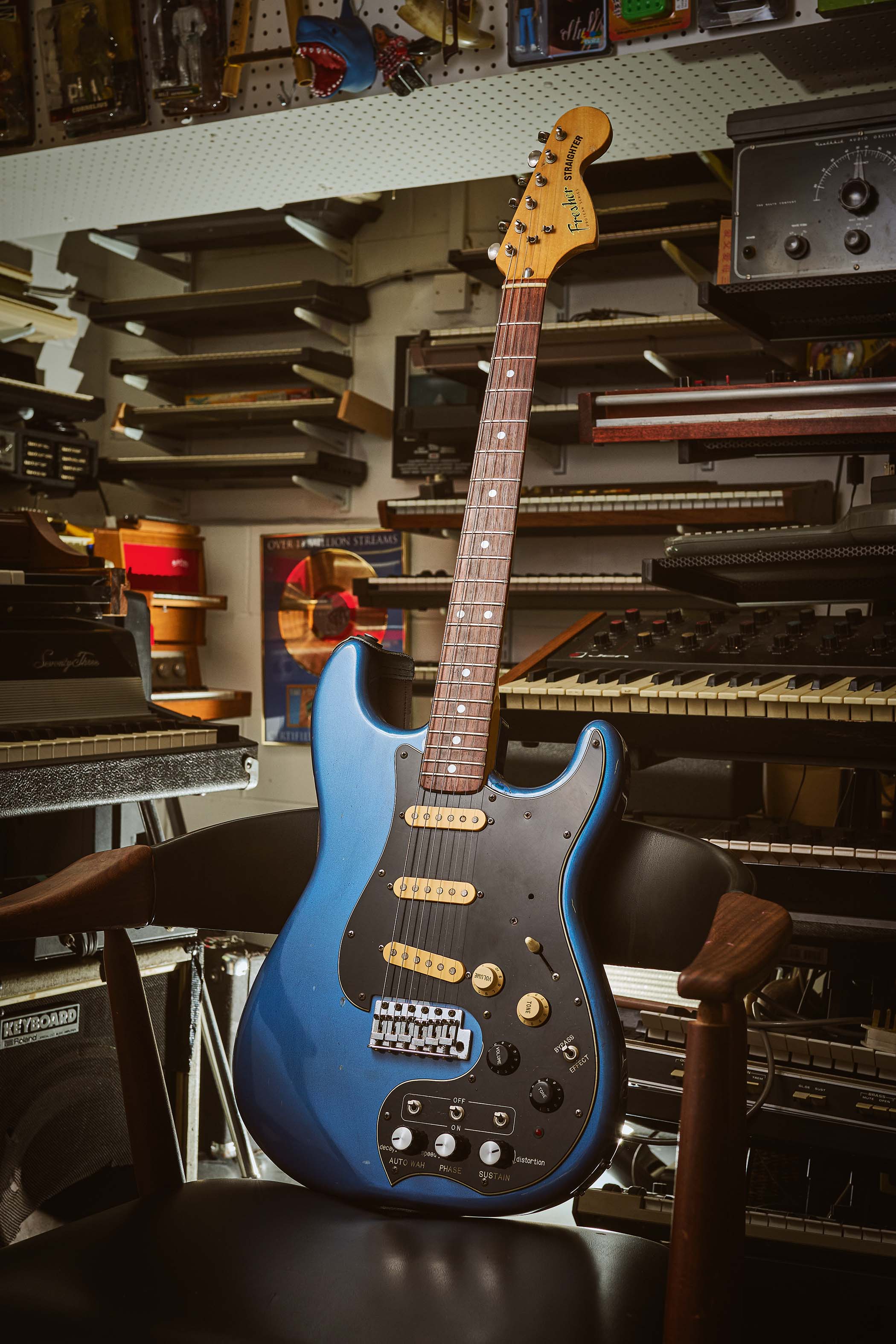
You can hear lots of musical influences from the yacht-rock era in Young Gun Silver Fox – was there a particular musical touchstone when you were starting out?
“I remember thinking that Aja by Steely Dan is kind of the blueprint – I mean, if you could make records that musical and with great musicianship, and be on the radio and be popular… that was kind of the highest, you know? If there was a formula for every kind of success that you could have in music, that record embodied it.”
The way that I play any musical instrument is always to serve the song, so it’s very functional and part-driven
The new album sounds in-keeping with your previous four records, but this one is maybe a bit more immediate and punchy.
“I think the way we made it was a big difference [from the process adopted for previous albums]. Side one was written and mostly recorded at Andy’s in Norfolk, so I just went up with my 335 and that little pedal I showed you earlier, the [DiCosimo Audio 360+ Bass Preamp] Acoustic 360 thing.
“I used his acoustic and his basses, his drums and his pedals… I had him plugging stuff in for me, like, ‘What do you need on this?’ It was cool. Obviously, we played at the same time and wrote at the same time, so it was really organic.
“And we never made a record like that before. With the other records, I’ve done stuff here [in London] and sent it to him, and he’s done stuff and sent it to me.”
What’s your approach to guitar? With jazz-rock inspired music, there’s always the risk of succumbing to self-indulgence…
I’m trying to just get to the point. Some people try to extend their vocabulary, but I’m trying to refine the vocabulary I already have
“The way that I play any musical instrument is always to serve the song, so it’s very functional and part-driven. I mean, I appreciate more complex things, but I’m always trying to take something that has a richness to it and distil it down to just what needs to be there. Just the right notes – even if it’s just one note. It’s kind of being efficient and it’s about refinement as well. I feel like the more I do music, the more I’m trying to do it simply.
“I’m trying to just get to the point. Some people try to extend their vocabulary, but I’m trying to refine the vocabulary I already have – it’s about getting as close to being myself [musically] as I can, which is a fluid, evolving thing.
“But I think it’s also about what you don’t do, as much as it is about what you do. I think the real challenge [when performing the songs] live is to distil down all the parts – playing the rhythm parts, the lead parts – while singing loads of BVs and changing sounds on the pedalboard. It’s like being on the high wire. And just to be able to nail that consistently, that’s a real challenge.”
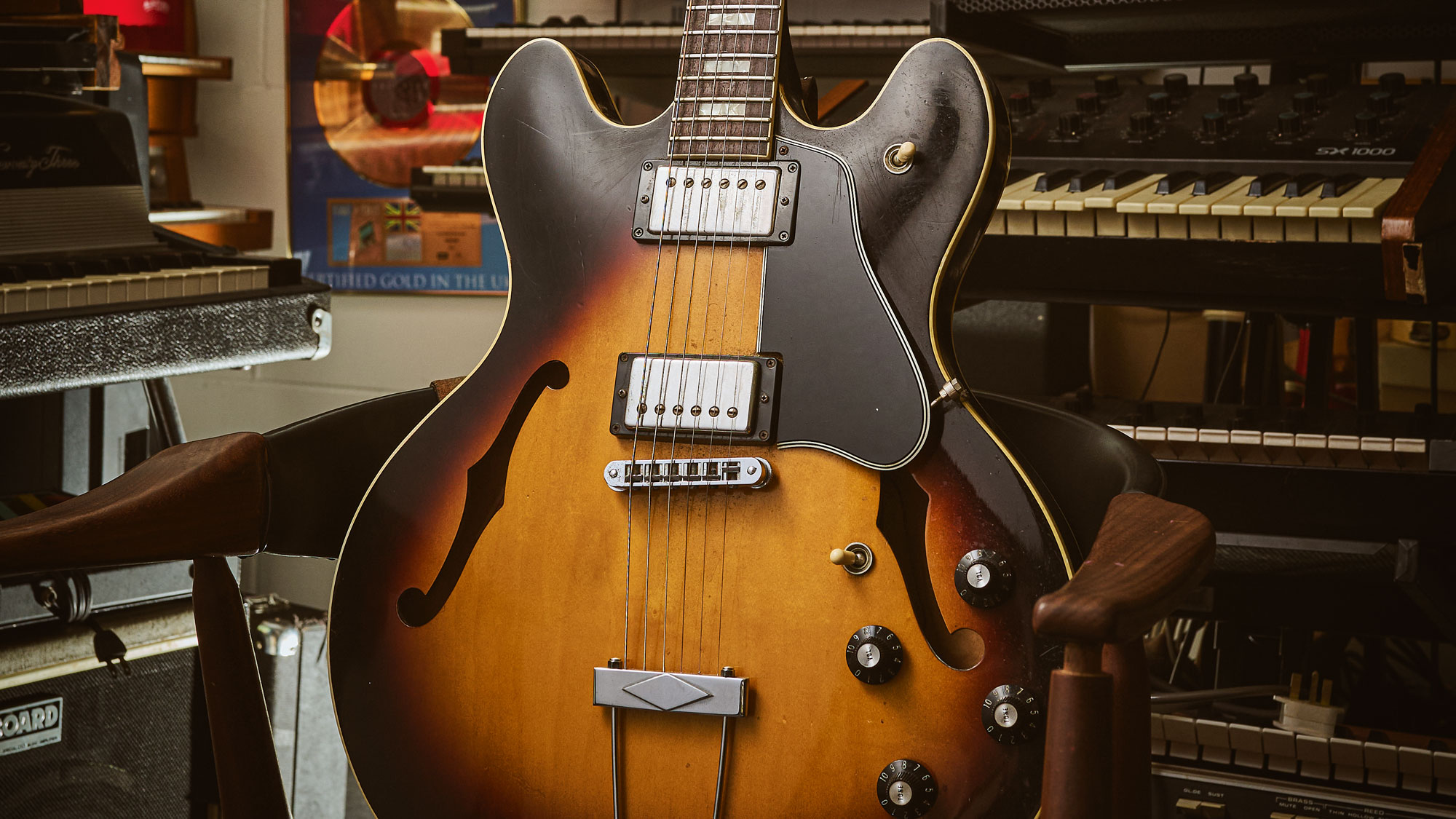
What’s your main guitar for Young Gun Silver Fox work?
“That 1978 ES-335 is my Number One, man. It’s been on the most records, it’s been on all the touring. It’s like the ‘one and done’ guitar. It has a coil-tap, so you can get a really good, almost Strat-type sound, which is what I mainly use for the Young Gun thing. So the switch on the horn is for the coil-tap, and the pickup selector is down in the usual spot.
“I actually have another guitar, which isn’t here, that I had modded to replicate it. I have that as a second guitar, or for when we’re flying and stuff like that. But I’m still not ready not to play that [original] 335, though I sometimes feel I shouldn’t be taking it everywhere all the time.
“I’ve slightly cleaned it recently, only slightly – but it was just so ridiculously dirty. I’ve had strings on that guitar for 10 years. You know, I never break strings on that guitar, but then I broke the string on it twice and it put the fear into me. It happened on a Young Gun gig, and then it happened on another gig, and it was so sweaty that I couldn’t change the string [laughs].”
“But even now I still don’t change strings very often. I’ll maybe do three or four tours and rehearsals on the same set without changing a thing. I hate the sound of new strings and the feel of them, the zinginess – it’s just horrible!”
Where did you get it, originally?
“I got that in 1992 it in LA at a place called Guitars R Us on Sunset, which was sort of opposite Guitar Center, for $1,200. Now that guitar’s worth probably anywhere from six to 10 grand, depending on condition. I saw one for just under seven grand, just like my one but really clean – I think it was in Rotterdam.
“Anyway, I’d love to have two of them, but all the ’70s stuff is going up. People are really revisiting it because you can’t touch the ’60s stuff [because of the prohibitive expense], no way.”
How about amps – do you go the route of classic valve amps or do you use other methods?
Prince was a big influence for the whole DI thing, and some guitars just sound great ‘in’
“I go direct for a lot of the Young Gun stuff. So the amp has become more like a pedal [in how I use it in my music]. I’ll do it if that’s the right thing, or I’ll re-amp [the original direct recording] and if it sounds better, then I’ll keep it – but it’s a choice to do so.
“Prince was a big influence for the whole DI thing, and some guitars just sound great ‘in’. And then once you hit tape or compressors and EQs and pedals and things, you start to get a cool sound.”
“But I do use a Jazz Chorus 50 for Young Gun. It takes pedals really well and it gets nice clean sounds, which most amps don’t do. But it’s a tough-sounding amp – it’s got balls, man, and I prefer it to the JC-120, which is big and doesn’t sound as good as that. I mean, over half the latest Young Gun album is recorded through an amp, actually, which is a bit of a difference – that was Andy’s Jazz Chorus 40.”
One of the delights of visiting you here in your London studio is the array of both classic and oddball guitars. What’s that blue Strat-style guitar with all the knobs on it? We’re intrigued…
“This is a ’70s Japanese Fresher Strat[-style Straighter electric], which is also known as a Jimmy Nolen model. It’s got all the effects on it – a distortion, auto-wah, phase shifter and sustainer. It’s really heavy because of all the effects, but the phaser on it is really good.’
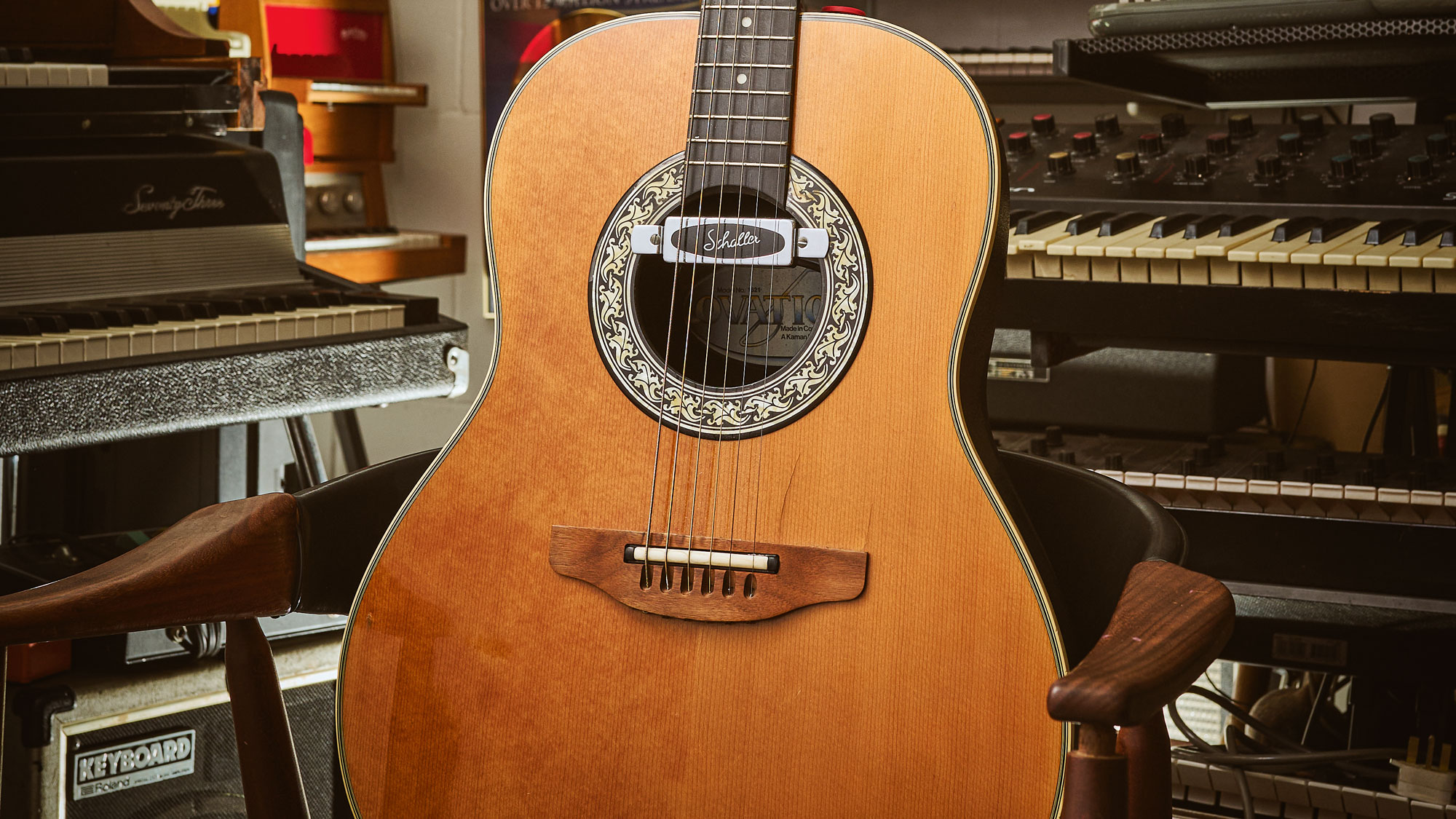
The guitar industry goes through fads of putting effects into guitars.
“Well, I’ve got a few: I’ve got the Vox over there, which I used on the [Ultrasonic] Grand Prix record, the Kay Effector, and there’s also a Kimbara [S-type] similar to that, which has got all the effects on it. And at one time I had a Gretsch Super Axe; I wish I still had that.”
“I like a gimmicky guitar – I like something that does a ‘thing’. I’ve got the 335 that’s kind of ‘one and done’. But then it’s also nice to have lots of little stunt guitars that might be a one- or two-trick pony, but they’re quite nice if you want that particular thing.”
Tell us about that vintage Vox semi, which also has onboard effects, by the look of it.
“Tone-wise, that’s another ‘one and done’ guitar – it really just has the sounds, that guitar. That was on the cover of the Ultrasonic Grand Prix album [which Shawn made in collaboration with Little Barrie]. Yeah, that’s a cool guitar – it was only made in 1967.”
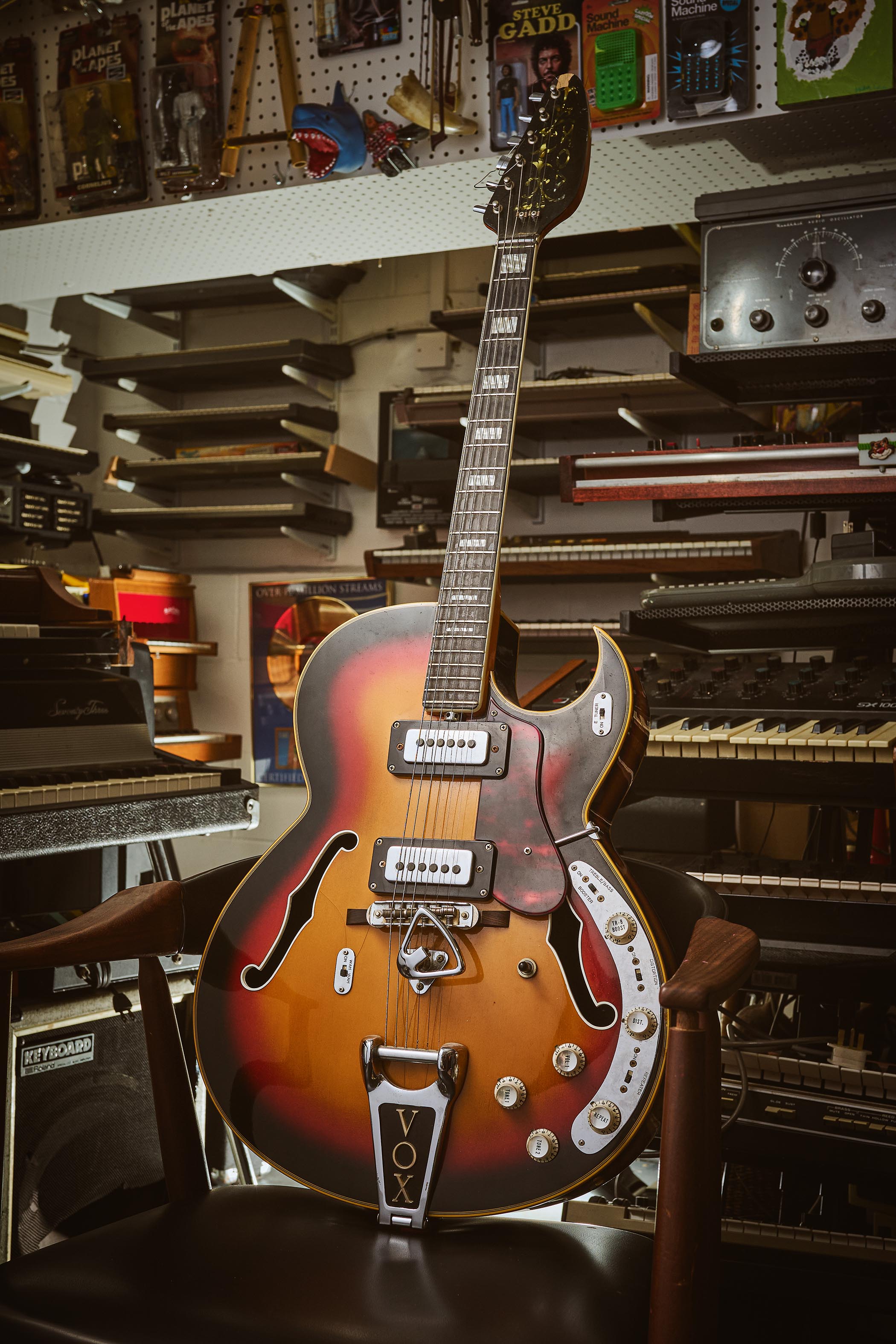
It’s a really interesting collection.
“Yeah, I try to go for more interesting ‘beyond-the-obvious’ type shit, usually. But then every now and again my tastes align [with the mainstream] and then it’s kind of like, ‘Do I really want to spend that much money on that thing?’
There’s just so much guitar for the money. I mean, I’m not gonna buy any modern reissue-y things or Custom Shop stuff
“I mean, I got an HS Anderson Mad Cat Tele[-style electric, as played by Prince] after not having a Tele for a long time and I was watching out for one of those for years. Eventually, I found the cheapest one I’d ever seen. But even then, it was the most expensive guitar I’d ever bought at the time.
“But I’ve always had a love for Japanese lawsuit-era copies and I’ve been buying them for a long time. Now they’ve gotten more and more expensive, and some of them are super sought-after. And it’s like, ‘Oh no, it’s too late.’
“The last guitar I bought was that Ibanez L5 copy, which is a super-lovely guitar and I got that for under two grand. There’s just so much guitar for the money. I mean, I’m not gonna buy any modern reissue-y things or Custom Shop stuff.”

There are dozens of guitars here – it’s hard to imagine not having every single niche tool you might need for tracking. Is there anything you don’t have that you wish was in the collection?
“The one I really regret [missing out on] was a Vox 12-string that Andy Hackett had back in the mid‑’90s. It’s a white one with a Bigsby on it and all the effects: it had the Repeater and the fuzz and the treble boost and stuff. I actually went to go get the money out from the bank – and it was, like, $1,000, right? – then I came back to the shop to get it and it was gone.
“I was like, ‘Where’s the guitar, man?’ And the guy behind the counter said, ‘Oh, the drummer from Dodgy came in and bought it.’ I was like, ‘I went to the fucking bank!’ [laughs] I never saw another one for yonks – for over 10 years – and then when I finally did see one it was like, ‘Nah, I’m not paying that.’
“The one drawback for me with that guitar is that it’s just a bit hard to play. The neck is a bit narrow, which is what makes it hard, especially for live work. If it was my main guitar then maybe I’d look at doing something about its playability. But sometimes I actually think it’s good that guitars are hard to play. There’s something good that comes with that, you know, because you really have to articulate and play cleanly.
“I don’t really like guitars that are too easy to play. I feel like they need to have a bit of resistance; they need to be solid-feeling. That 335 for me is very buttery to play, but it didn’t used to be. It’s been refretted – I finally had to refret it – and I’ve been fighting to get it to feel like it used to.
“I dial it back and get it feeling better for me, but then it always just gets really easy to play. It’s just too easy to play, actually. I want to play the guitar – I don’t want it to play me!”
- Pleasure is out now via Elan.
- This article first appeared in Guitarist. Subscribe and save.
Jamie Dickson is Editor-in-Chief of Guitarist magazine, Britain's best-selling and longest-running monthly for guitar players. He started his career at the Daily Telegraph in London, where his first assignment was interviewing blue-eyed soul legend Robert Palmer, going on to become a full-time author on music, writing for benchmark references such as 1001 Albums You Must Hear Before You Die and Dorling Kindersley's How To Play Guitar Step By Step. He joined Guitarist in 2011 and since then it has been his privilege to interview everyone from B.B. King to St. Vincent for Guitarist's readers, while sharing insights into scores of historic guitars, from Rory Gallagher's '61 Strat to the first Martin D-28 ever made.
You must confirm your public display name before commenting
Please logout and then login again, you will then be prompted to enter your display name.





